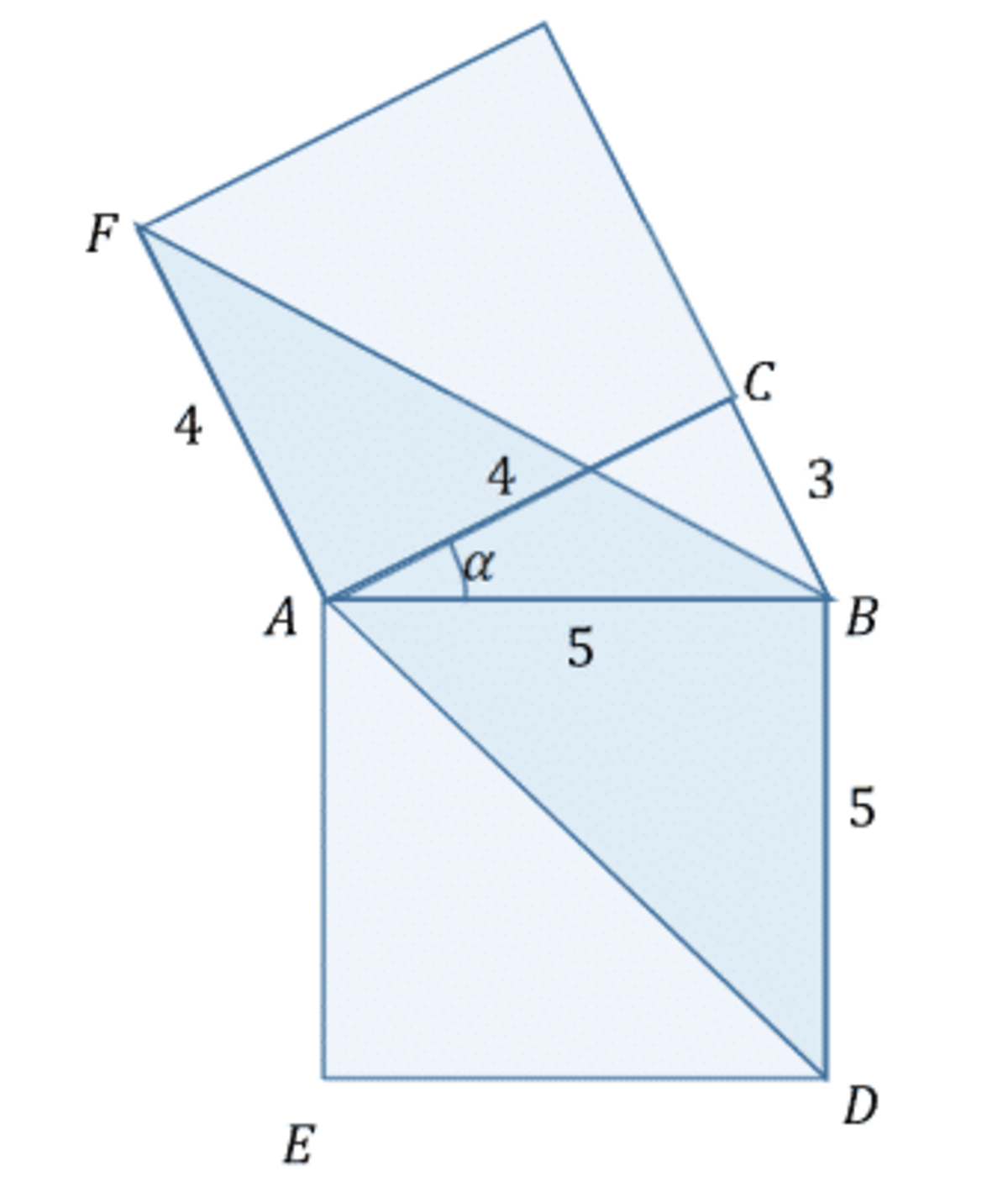Pythagoras's Dark Secret
On the picture above, area of square
A
B
D
E
,
C
A
F
G
and
B
C
H
K
are 25, 16 and 9, respectively. Find the area of the shaded region (in
unit
2
).
The answer is 20.5.
This section requires Javascript.
You are seeing this because something didn't load right. We suggest you, (a) try
refreshing the page, (b) enabling javascript if it is disabled on your browser and,
finally, (c)
loading the
non-javascript version of this page
. We're sorry about the hassle.
3 solutions
Thanks Jason
ar(ABD)=25/2=12.5 AD=5√2 ,if we a perpendicular from B to AD then bisects it lets say at M AM=(5√2)/2=5/√2 AB^2=AM^2+BM^2 25=25/2+BM^2 BM=5/√2 ar(AFB)=1/2.b.h=1/2.4.BM=2.5/√2=5√2 Area of shaded figure=ar(ABD)+ar(AFB)=12.5+5√2 =19.57 cm^2 I don't see any mistake in this approach if you then please share it
Log in to reply
I see you assume that F A and A D in one line. No they are not.

Triangle A B D has area 2 2 5 .
Angle α = a r c c o s ( 5 4 ) .
Area of △ A B F = 2 1 × 4 × 5 × s i n ( 9 0 ∘ + α ) = 1 0 × c o s ( α ) = 1 0 × 5 4 = 8 .
From the figure above, we know that A B = 5 , B C = 3 and A C = 4 , so
[ A F G B ] = 2 ( 4 + 7 ) × 4 = 2 4 4
[ B G F ] = 2 7 × 4 = 2 2 8
[ A B D ] = 2 [ A B D E ] = 2 2 5
Let’s assume that A is the shaded area, thus
A = [ A B D ] + [ A F G B ] − [ B G F ] = 2 2 5 + 4 4 − 2 8 = 2 4 1 = 2 0 . 5